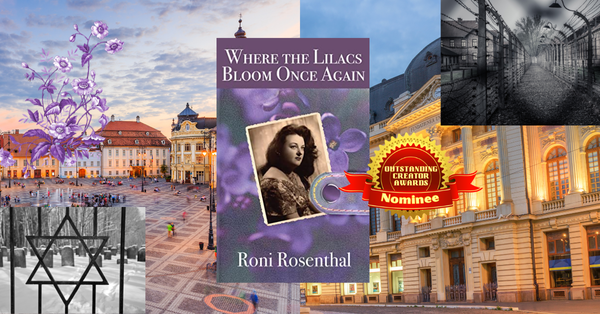|
Score: 93/100 (9.3 out of 10)
Where the Lilacs Bloom Once Again is a moving and culturally significant family history by Roni Rosenthal. It is based on a memoir, letters, scrapbook, and family tree compiled over the years by the author's real-life ancestors. Testimony by other families and individuals involved in these events also contributed to the construction of this text. The author's family lived in Romania during the late 19th and early 20th century. It was a time of intense antisemitism, exacerbated by the rise of both secular communism and Nazism in Eurasia. Nazism and the conquest of the German state placed a dagger to the throats of all Jews living in Europe. Furthermore, the ascension of Stalin and the Soviets—who also held antisemitic views—threatened to push the Jews into lives akin to the slaves of the last century. Romania found itself caught in these historically turbulent times. As a result, Jews like the author's family became targets of derision and persecution. Everything from their businesses to their very lives were threatened by the growing wave of hate. This book captures the misery and tragedy of the times while also displaying the non-war, human element of it. It's easy to see that period in European history dominated by World War I, the Great Depression, World War II, and the Holocaust. Indeed, these events do play major roles in this book. However, those weren't the only things that were happening in that country and at that time. People were still trying to build relationships with other people, take care of their families, start and run businesses, and survive as best they could. People were people. That might sound strange, but today it's easy to look at black & white photos and videos of the time and to see these people as somehow foreign--like figures in a painting. It's easy to forget that these were real people with goals, dreams, ambitions, fears, anxieties, pain, and triumph. These were people who loved (and also hated). In that sense, this book is incredible. It brings to life a time and a place that seem so foreign and distant to the rest of us. This book primarily follows Friddie, a Jewish girl coming of age in the Romania capital of Bucharest. You really get the sense of how small Friddie is compared to the world and the circumstances around her. At the same time, it's impressive to see her assertiveness and individuality, especially when the pressures of her family, the culture, and the over-arching circumstances seem to be against her. Friddie suffers perhaps the greatest in the book, falling in love with a fragrance salesman named Freddy during the critical period between 1938-1940—the start of the war of wars. Friddie finds herself arrested by the government's secret police, imprisoned, tortured, and sexually assaulted for thirteen years. These thirteen years comprise the crux of the book as they see Friddie cling to hope through her brutal imprisonment and the passage of multiple totalitarian regimes. However, Friddie's plight—as perilous as it is—is not the only thing happening during this time. We get an interesting glimpse into the lives of other people involved with Friddie including Mircea, another prisoner who is forced into hard labor by the Soviets, eventually helping to build the Danube Canal. Meanwhile, Rosa, another pillar of the book, learns of the terrible events of the Iasi massacre and the further toll it took on her already devastated family. Rosa, David, and others also experience the Bucharest pogrom, another horrendous massacre of Jews living in the country. These two massacres are news to us. These aren't the kinds of things that most of the Anglo-American public is educated about. After all, in most of our minds, Romania is just some country in Europe where Dracula lived & where Vlad the Impaler came from. Oh, how wrong we were. The author is not afraid to point out this fallacy, showing how big a tourist attraction Transylvania, for example is. Romania, we learn from this book, is a country with a rich history and culture, plagued (during this period) by socio-political turmoil including power struggles between the royals and growing political movements like the communists. We even get a glimpse into the life of one of the king's doctors who nobly refuses to flee into exile with the king so that he can save lives. David's recovery from suffering a brain-injury from an antisemitic attack is very tragic and moving, one of the things that really reeled us in. We also catch a glimpse into the life of Aurica, who suffers a treacherous journey over the ocean to the holy land, Israel. Also of intrigue is the mystery behind Freddy, Friddie's estranged husband and the father of her child. Friddie is compelled to hunt him down in order to learn the truth about him. Lilacs serve as a powerful and beautiful motif in the book, serving as the cause of Friddie and Freddy meeting as well as the flower that Friddie associates with memories of her home—a home that seems like a far away dream at times. This is history. This is how history has been recorded for thousands of years: through written records and word of mouth. Through first-hand accounts of the things that happened. So, we see tremendous value in this book. We would not be surprised to see this quoted on something like the History Channel. Check it out on Amazon!
0 Comments
Leave a Reply. |
Archives
July 2024
Categories |

 RSS Feed
RSS Feed